30 Days Yoga Challenge – A Beginner’s Guide
Are you thinking about taking up yoga but don’t know where to start? Have you always wanted to try yoga but feel intimidated by all the pretzel-like positions? We’ve got you covered with this 30 days yoga challenge!
This beginner’s guide to yoga will give you everything you need to know to get started on your yoga journey.
Yoga is an ancient practice that originates from India. It is a system of physical and mental exercises that were developed to promote health and well-being.
Yoga is based on the belief that the mind and body are connected, and that by practicing yoga, we can achieve balance and harmony in our lives.
There are many different types of yoga, but for the purpose of this challenge, we will be focusing on Hatha yoga. Hatha yoga is a gentle form of yoga that is perfect for beginners.
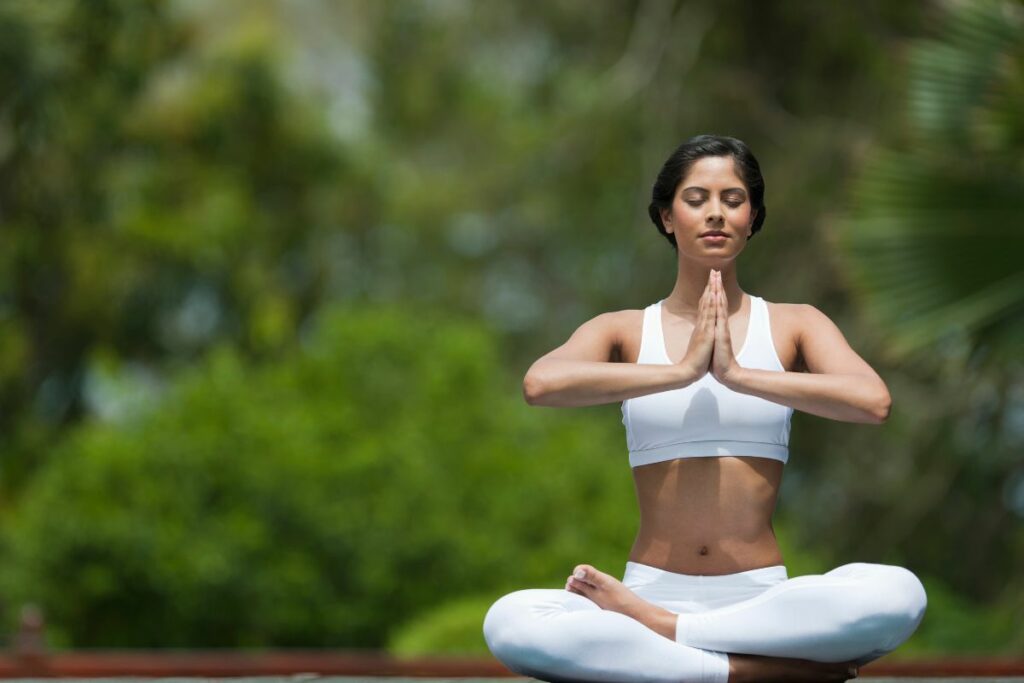
This post may contain affiliate links, which helps keep this content free. Please read our disclosure for more info.
What is Hatha Yoga?
The word “hatha” can be translated as “forceful,” which might give you the wrong impression about this relatively slow-paced and gentle form of yoga.
However, the goal of Hatha yoga is not to achieve maximum physical exertion but rather to use the body as a tool for achieving mental and spiritual well-being.
Hatha yoga is a type of yoga that focuses on physical postures (asanas) and breathing exercises (pranayama).
Asanas
The word “asana” means “pose” in Sanskrit, and there are hundreds of asanas that can be performed for a variety of purposes.
Some asanas are designed to increase flexibility, while others help to improve balance or build strength.
In recent years, asanas have become increasingly popular in the Western world as a form of mind-body exercise.
While a few asanas can be performed without any special equipment, most require the use of a yoga mat or other props.
Asanas can be performed alone or in groups, and they can be practiced at any time of day.
Pranayama
Pranayama is an ancient yogic practice that involves the control of breath.
The word pranayama is derived from two Sanskrit words: ‘prana’, which means life force or energy, and ‘ayama’, which means control or regulation.
There are many different types of pranayama, but all involve the deliberate regulation of breath.
Typically, pranayama is practiced through a combination of inhalation, exhalation, and retention of breath.
This can be done through the nose or mouth, and the duration of each stage can vary depending on the specific practice.
Pranayama is thought to have a number of benefits, including improved lung function, reduced stress and anxiety, and increased focus and concentration.
Additionally, some believe that pranayama can help to balance the body’s energy levels and promote overall health and well-being.
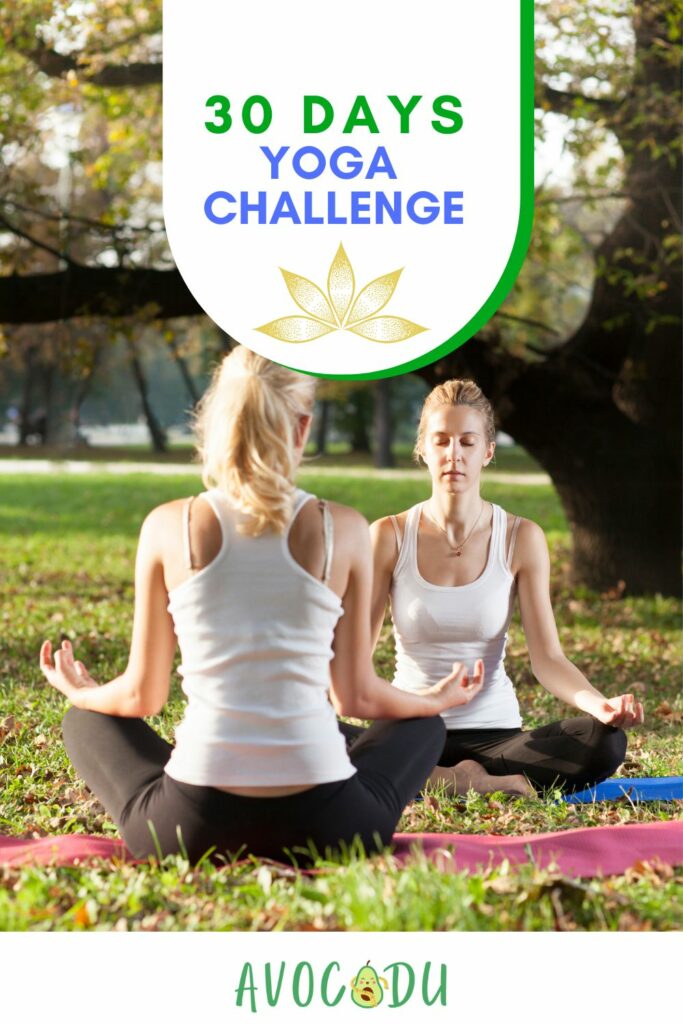
Basic Hatha Yoga Poses for Beginners
If you’re new to yoga, start by familiarizing yourself with some basic hatha yoga poses. Here are a few simple poses that are perfect for beginners:
Asana Poses
Don’t worry, we won’t be doing any advanced poses that require years of training. We’ll stick to some basic asanas that are perfect for beginners.
Mountain Pose (Tadasana)
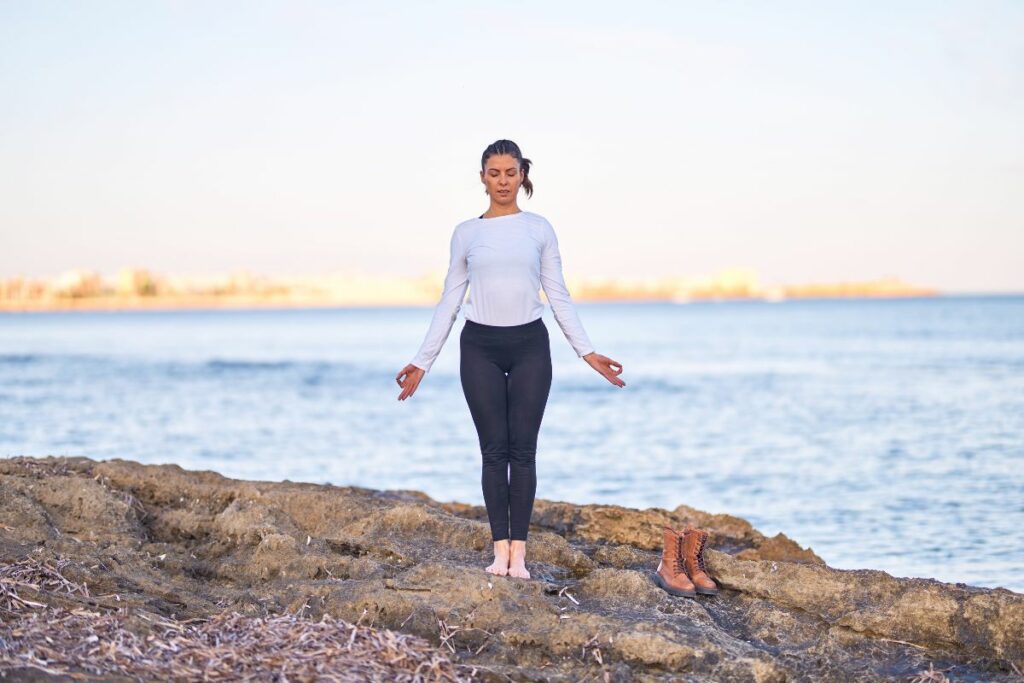
Mountain pose is one of the most basic yoga asanas, but don’t let that fool you—it’s also one of the most important.
This pose helps to improve your posture and alignment while also strengthening your legs, knees, and ankles.
To perform mountain pose, simply stand with your feet hip-width apart and your arms at your sides. Make sure that your weight is evenly distributed between both feet and take a deep breath in.
As you exhale, imagine yourself rooted into the ground like a mountain. Hold this pose for 30 seconds to 1 minute and then release.
Downward-Facing Dog (Adho Mukha Svanasana)
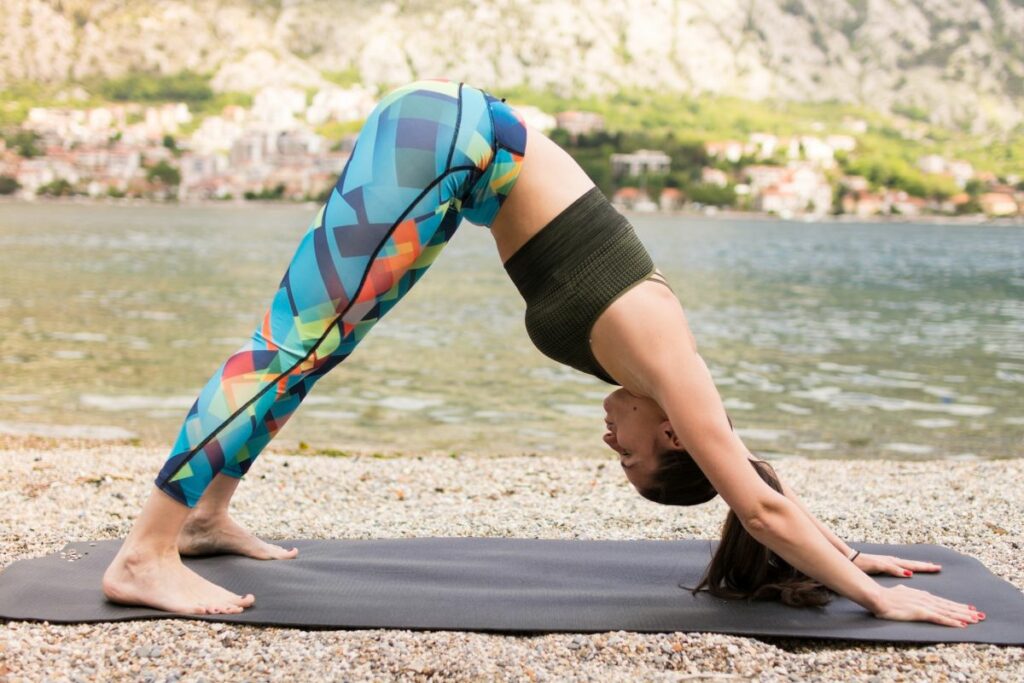
Downward-facing dog is one of the most well-known yoga asanas out there. It’s often used as a resting pose in between other, more challenging poses.
This pose helps to stretch your hamstrings, shoulders, calves, and hands while also strengthening your arms and legs.
To get into downward-facing dog, start on all fours with your hands placed directly under your shoulders and your knees under your hips.
As you exhale, lift your knees away from the floor and straighten your legs. At the same time, press down into your hands to lift your hips up toward the ceiling. You should now be in an inverted “V” shape.
Hold this pose for 30 seconds to 1 minute before returning to all fours and repeating on the other side.
Warrior I (Virabhadrasana I)
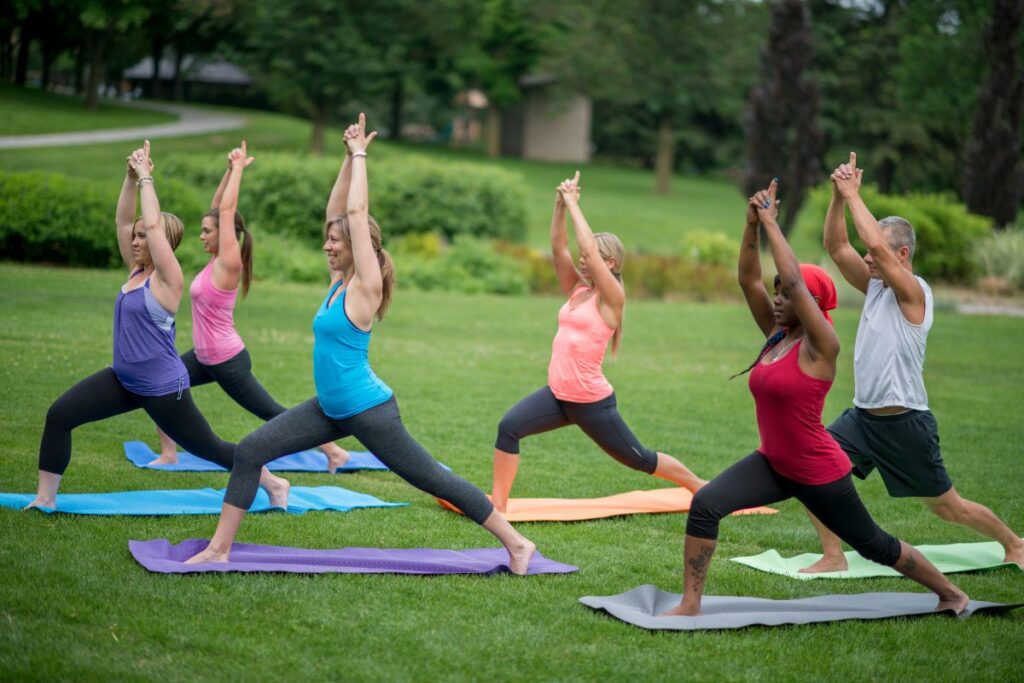
Warrior I is a powerful yoga asana that helps to improve balance while also strengthening your legs, ankles, back, and arms.
This pose gets its name from Virabhadra—a warrior who was created by Shiva out of a lock of his hair—and it represents strength and courage.
To do this pose correctly, start by standing with your feet hip-width apart before taking a large step forward with one leg while keeping the other leg planted firmly on the ground behind you.
Bend your front knee until it reaches a 90-degree angle while making sure that your back leg remains straight with its heel pressing down into the floor behind you.
Next reach both of your arms up overhead with your palms pressed together before looking up toward the ceiling.. Hold this pose for 30 seconds before releasing and repeating on the opposite side..
Pranayama Poses
Pranayama is a type of breathing exercise that is often used in yoga. There are many different types of pranayama, each with its own benefits.
Kapalabhati
Kapalabhati is one type of pranayama that helps to cleanse the lungs and improve respiratory function.
To do this exercise, simply exhale forcefully through the nose while drawing the stomach in. Then, inhale deeply and relax the stomach muscles. Repeat this process for 10-15 minutes.
Anuloma Viloma
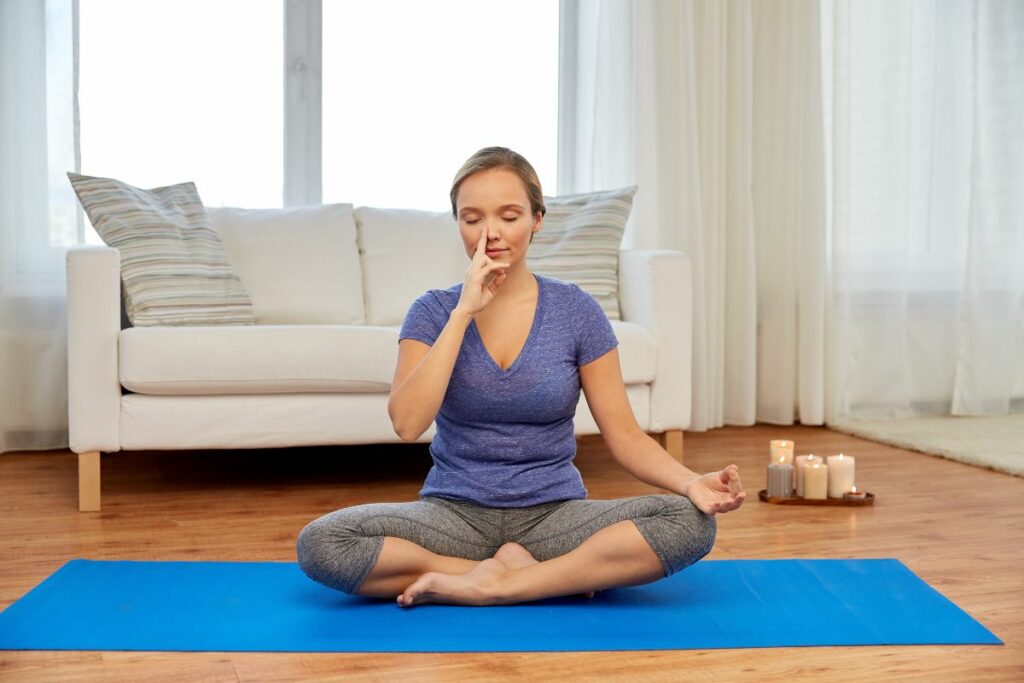
Anuloma Viloma is another type of pranayama that helps to calm the mind and reduce stress levels.
To do this exercise, sit in a comfortable position with your spine straight. Place your right hand on your left nostril and your left hand on your right knee.
Close your right nostril with your thumb and inhale deeply through your left nostril. Then, close your left nostril with your ring finger and exhale through your right nostril.
Repeat this process for 10-15 minutes.
The 30 Days Yoga Challenge
For the next 30 days, we challenge you to do at least 15 minutes of Hatha yoga every day. That’s it! Just 15 minutes.
We know that life can be hectic, so if you can’t do a full hour of yoga, don’t worry – just 15 minutes will do the trick. And if you miss a day, no worries – just pick back up where you left off.
So what are you waiting for? Get started on your 30 days of yoga today! Remember, all you need is 15 minutes – Namaste!
Looking For More Yoga Poses For Beginners?
You can find even more poses in our yoga for beginners PDF – Sign up for your free yoga guides here.
If you want to start a regular yoga practice, but don’t quite know how to get started, you should check out our Yoga Fat Loss Bible for Beginners!
You don’t need a gym membership or fancy, expensive equipment; and there are no crazy pretzel poses!
It’s a great solution for those looking to lose weight, get more flexible, and relieve aches and pains with a calm yoga practice. It also comes with a free meditation guide for beginners that will help you let go of your worries and relieve stress and anxiety.
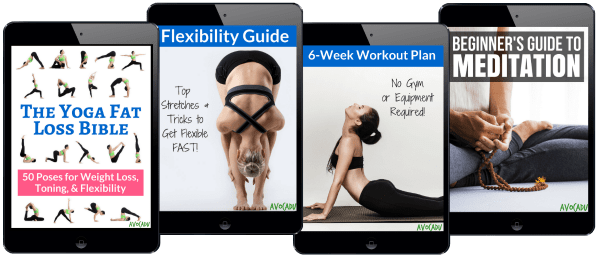
It has detailed instructions and beginner modifications for your practice + a 6-Week Workout Plan any beginner can start with!
You can check it out by clicking here!
Always remember that the most difficult part of doing yoga is SHOWING UP. Make sure to show up today and give your best to these exercises. You deserve it!
If you enjoyed this article on 30-days yoga challenge for beginners or have any questions for us, please leave them in the comment section below!

I actually did Hatha Yoga many years ago and I loved it. I should never have stopped. I also did Ashtanga Yoga but I prefer Hatha. Well, no matter the style Yoga goes great with Meditation. Yoga before meditation actually makes it far better and deeper!